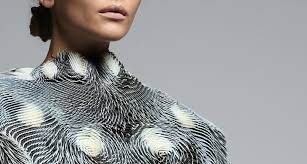Introduction
The fashion industry, once known for its timeless traditions, is undergoing a remarkable transformation thanks to technological advancements. In this comprehensive guide, we delve into “The Impact of Technology on the Fashion Industry.” From smart textiles to virtual try-ons, we’ll explore how technology is revolutionizing every aspect of the fashion world. Join us on this journey as we unveil the fusion of style and innovation.
The Impact of Technology on the Fashion Industry
In this section, we’ll dive deep into the various ways technology is reshaping the fashion landscape.
Smart Fabrics and Wearables
Fashion is no longer just about aesthetics; it’s also about functionality. Smart fabrics embedded with sensors and microchips have given birth to a new era of wearable technology. From fitness trackers woven into clothing to temperature-regulating fabrics, technology is making our clothing work for us.
3D Printing in Fashion

Traditional manufacturing methods are making way for 3D printing in the fashion industry. This revolutionary technology allows designers to create intricate garments with unmatched precision and speed. Discover how 3D printing is fostering creativity and sustainability.
Virtual and Augmented Reality in Retail
Shopping for fashion has become an immersive experience, thanks to virtual and augmented reality (VR/AR). Step into virtual boutiques, try on outfits virtually, and see how these technologies are enhancing the online shopping journey.
Sustainable Fashion through Tech
The fashion industry is increasingly embracing sustainability, and technology plays a pivotal role in achieving this goal. Explore how innovations like blockchain are enabling transparent supply chains, reducing waste, and promoting ethical practices.
AI and Personalized Fashion
AI algorithms are transforming how fashion brands interact with consumers. From personalized style recommendations to virtual stylists, AI is making fashion more accessible and tailored to individual tastes.
E-commerce Revolution
E-commerce has become the lifeblood of the fashion industry. Discover how technology has disrupted traditional retail and why e-commerce is here to stay.
The Influence of Social Media
Social media platforms have become the fashion runways of the digital age. Learn how influencers, fashion bloggers, and brands leverage social media to showcase their latest collections and connect with their audience.
Fashion and Sustainability: A Marriage of Necessity
The growing awareness of environmental issues has led the fashion industry to focus on sustainability. Explore how technology is helping fashion brands reduce their carbon footprint and embrace eco-friendly practices.
The Future of Fashion Tech
What does the future hold for technology and fashion? Get a glimpse of upcoming innovations, from AI-designed clothing to interactive fashion shows.
FAQs
How has technology improved the design process in the fashion industry?
Technology has streamlined the design process through software tools like CAD (Computer-Aided Design) and 3D modeling. These tools allow designers to create and visualize their ideas more efficiently, reducing time-to-market.
Are sustainable fashion practices really making a difference?
Yes, sustainable fashion practices are making a significant impact. Brands adopting sustainable practices are reducing waste, conserving resources, and addressing ethical concerns in the industry.
What role does AI play in predicting fashion trends?
AI analyzes vast amounts of data, including social media trends, to predict future fashion trends accurately. This helps brands stay ahead of the curve and create products that resonate with consumers.
How do virtual try-ons benefit consumers and fashion retailers?
Virtual try-ons offer consumers the convenience of trying on clothing digitally, reducing the need for physical fitting rooms. For retailers, it leads to higher customer engagement and reduced returns.
Is 3D printing environmentally friendly in fashion production?
3D printing is considered more environmentally friendly than traditional manufacturing because it produces less waste and allows for the creation of custom-fit clothing.
What are the challenges of incorporating technology into sustainable fashion?
One challenge is the initial cost of implementing sustainable technology. Additionally, consumers need to be educated about the benefits of sustainable fashion to drive its adoption.
Conclusion
As we conclude our exploration of “The Impact of Technology on the Fashion Industry,” it’s evident that technology is the driving force behind innovation, sustainability, and accessibility in fashion. From smart fabrics to AI-powered personalization, the fashion industry’s future looks promising. Embrace these changes, and you’ll be part of the stylish and sustainable future of fashion.







